Over 6 million travelers arrived in 2023, a jump of nearly 19% from the year before. That surge says something clear: this island draws people for many reasons, from sunny beaches to festival weekends in San Juan.
I’ll show you when to plan your trip for sun, savings, or events. I explain how high season (December–April), shoulder months (May–June), and low season (July–November) shape crowds, prices, and weather.
Hurricane season runs June through November, with the peak risk in August and September. I’ll help you weigh risk versus reward so you can book with confidence and enjoy bioluminescent bays, rainforest hikes, or Old San Juan walks.
By the end, you’ll know which windows match your budget and mood—whether you want dry winter days near 70–83°F or quieter beaches when flights and stays drop.
Key Takeaways
- Travel demand rose sharply in 2023—expect busy winters and lively festivals in San Juan.
- High season: December–April for dry weather and warm days.
- Shoulder months offer a balance of value and decent weather.
- Low season overlaps hurricane months; plan insurance and flexible bookings.
- I’ll compare seasons so you can match dates to budget, crowds, and activities.
My quick verdict on the best time to visit Puerto Rico right now
My quick verdict: winter (Dec–Apr) delivers the most reliable weather, steady festival energy, and breezy days near 70–83°F. Expect higher prices and fuller hotels, especially in San Juan.
If you want value without huge compromises, I favor the shoulder window in May–June. You get warm, mostly sunny days, fewer crowds, and better room rates.
For budget hunters who can handle humidity and short showers, late summer and early fall offer deep discounts. Understand this overlaps hurricane season; August–September is the riskiest stretch, but many sunny days still occur.
Practical notes: book high-demand San Juan restaurants and tours early in peak months. You can still save in winter by choosing midweek flights and flexible lodging.
Rule of thumb: winter for easiest yes, May–June for balance, late summer/fall for the biggest savings.
| Window | Weather | Prices & crowds |
|---|---|---|
| Winter (Dec–Apr) | Dry, 70–83°F | High prices, heavy crowds in San Juan |
| Shoulder (May–Jun) | Warm, mostly sunny | Moderate prices, fewer crowds |
| Low (Jul–Nov) | Humid, scattered showers | Lowest prices, higher hurricane risk in Aug–Sep |
Seasons at a glance: weather, prices, and crowds
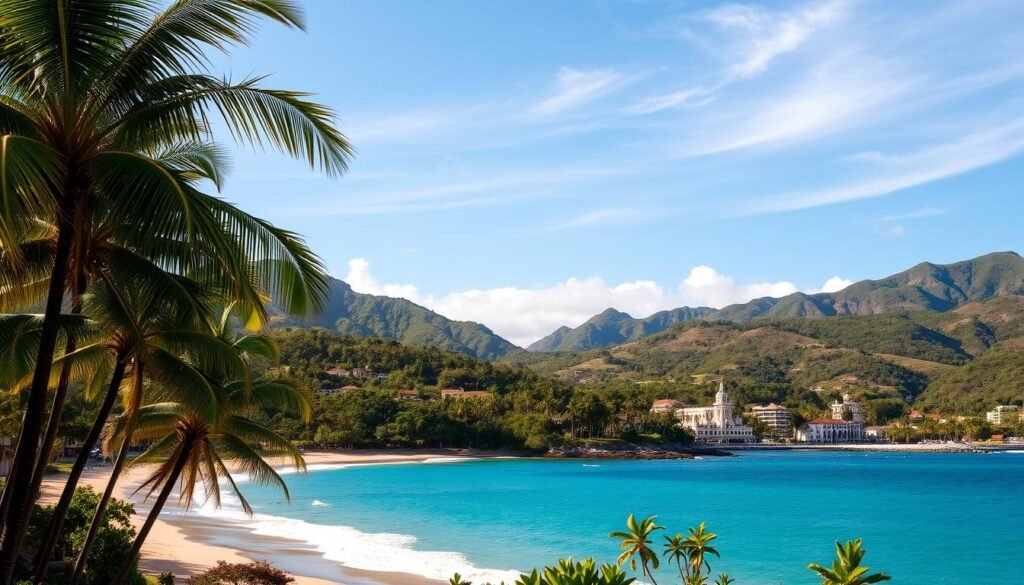
I map the island’s seasons so you can match weather, crowds, and prices at a glance. Below I break each window into clear expectations and quick pro tips for safer booking.
High season (December–April)
What I expect: the driest stretch and the largest crowds. Hotels and flights run at premium rates, especially around holidays and San Juan hotspots.
Shoulder season (May–June)
This is my go-to window for warm days, fewer lines, and more reasonable room choices across San Juan and other areas. May June often balances comfort and value.
Low season (July–November)
Low season offers the deepest discounts. I pack flexible plans because humidity rises and quick showers are common. Many days are still sunny; I just keep backups handy.
Hurricane season (June–November)
Hurricane season overlaps low months. I watch forecasts closely because August–September show the highest risk. Flexible tickets and insurance reduce stress.
Pro tips
“Book early for peak weekends, check moon phases for bioluminescent tours, and consider cancel-for-any-reason coverage.”
- Reserve flights and rooms early for busy winter dates in San Juan.
- Check moon phases before booking bioluminescent bay trips.
- Buy travel insurance during hurricane season and keep plans flexible.
Best time to visit Puerto Rico for my favorite experiences
I pick dates by the activity I want. That helps me lock in sun, surf, or a glow-in-the-dark paddle.
Beach days and poolside lounging
Winter gives the most reliable dry days for classic beach and pool hours. I find days warm and breezy, so afternoons feel perfect for sun and swims.
I also lean on late spring for fewer crowds. Parking and shade are easier, and the water stays pleasant for family pool time.You can learn more about best-time-to-visit-ireland
Surf action in the northwest
November–March brings the Atlantic swells I chase. Rincón can push 20-foot faces during big swells.
Isabela hosts big-competition breaks at Middles Beach, and Aguadilla’s Crash Boat offers accessible sessions when conditions line up. I book lessons or rentals ahead during this season so I don’t miss prime days.
Bioluminescent bay magic
I plan night paddles around darker, moonless nights for the clearest glow. Those windows often fall in the low season, when fewer lights and calm winds boost visibility.
Pro tip: check the moon calendar and slot a backup night—weather can shift quickly on the island.
| Activity | Ideal window | Quick notes |
|---|---|---|
| Sun-and-sand beach lounging | Winter; late spring | Dry days, fewer showers in winter; late spring quieter |
| Surf (Rincón, Isabela, Aguadilla) | Nov–Mar | Big Atlantic swells, book gear/lessons early |
| Bioluminescent bay paddles | Low season, moonless nights | Best on dark nights; check moon phases and weather |
For more on selecting dates, I also check a trusted planner like the best time to visit guide when I firm up dates.
San Juan spotlight: festivals, Old San Juan culture, and when to go
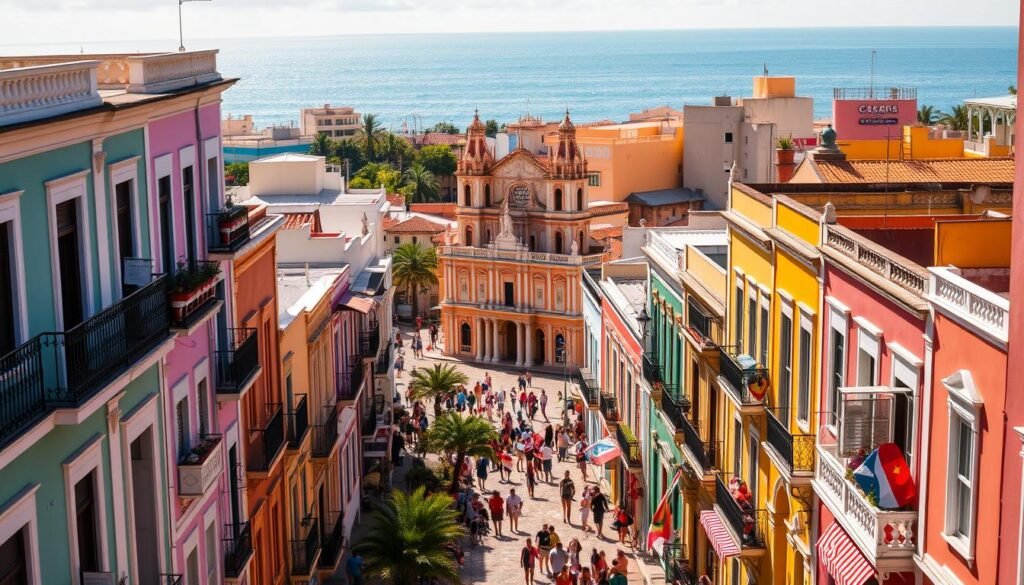
I focus on San Juan when I want a compact dose of city life, beaches, and lively events. The mix of colonial streets and seaside neighborhoods makes it easy to pair culture with sun.
San Sebastián Street Festival (January): music, dance, and artisan markets
January brings the San Sebastián Street Festival, which fills the streets old san with music, parades, and artisan stalls. I weave through crowds for live acts and local crafts, but I book hotels and restaurants early because demand spikes.You can learn more about best-time-to-visit-portugal
Condado and Isla Verde beaches: peak sun from mid-December to April
Condado and Isla Verde shine during high season. I plan beach mornings and late-afternoon walks then, when days are driest and warmest.
Paseo de la Princesa and El Yunque day trips: shoulder season
For quieter walks and greener trails, I pick May–June. Evening strolls along Paseo de la Princesa feel calm, and day trips to El Yunque have fewer crowds and nicer trail conditions.
Prices and crowds in San Juan: winter vs. May–June
Winter delivers festival energy and packed calendars, but higher prices and heavier crowds. In contrast, the shoulder window usually wins on value; I find better rates and easier restaurant reservations in May–June.
“I like to pair a city stay with a beach or rainforest day — it gives me both culture and nature within a short drive on the island.”
- I aim for winter when festivals and beach days matter most; expect to pay peak prices.
- I visit in May–June for quieter evenings, El Yunque hikes, and Restaurant Week deals across puerto rico.
- For photos and coffee breaks, I explore Old San Juan early, then use ride shares for day trips outside festival weekends.
Weather, prices, and crowds by time of year
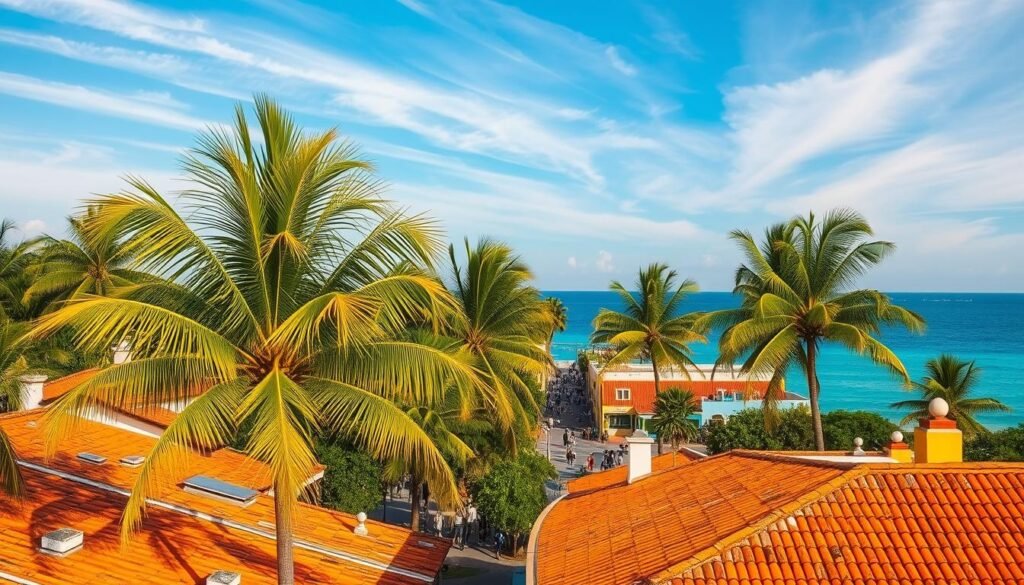
Here’s a concise snapshot of how weather, prices, and crowds shift across the calendar. I keep this short so you can pick dates with confidence and match your budget to conditions.
Winter (December–April): steady and popular
I count on winter for reliable days around 70–83°F and lower rainfall. Hotels and flights push rates up in San Juan and other hotspots, so I reserve early.You can learn more about best-places-to-visit-in-february
Summer to fall (July–November): heat, deals, and fewer crowds
From july november the island gets hotter and more humid. Brief tropical showers are common, but many days stay sunny. This window usually offers the best deals and lighter foot traffic.
“August and September carry the highest hurricane risk—stay flexible and watch forecasts.”
| Period | Typical weather | Booking & crowd notes |
|---|---|---|
| Dec–Apr | 70–83°F, drier | High demand; book early in San Juan |
| May–Jun | Warm, fewer crowds | Good balance of value and weather |
| Jul–Nov | Hot, humid, quick showers | Lowest prices; watch Aug–Sep hurricane risk |
I pack breathable layers, strong sun protection, and a light rain jacket. I aim outdoor-heavy plans for mornings and late afternoons, and keep indoor backups so a passing shower doesn’t ruin my plans.
When the best time visit aligns with your travel style
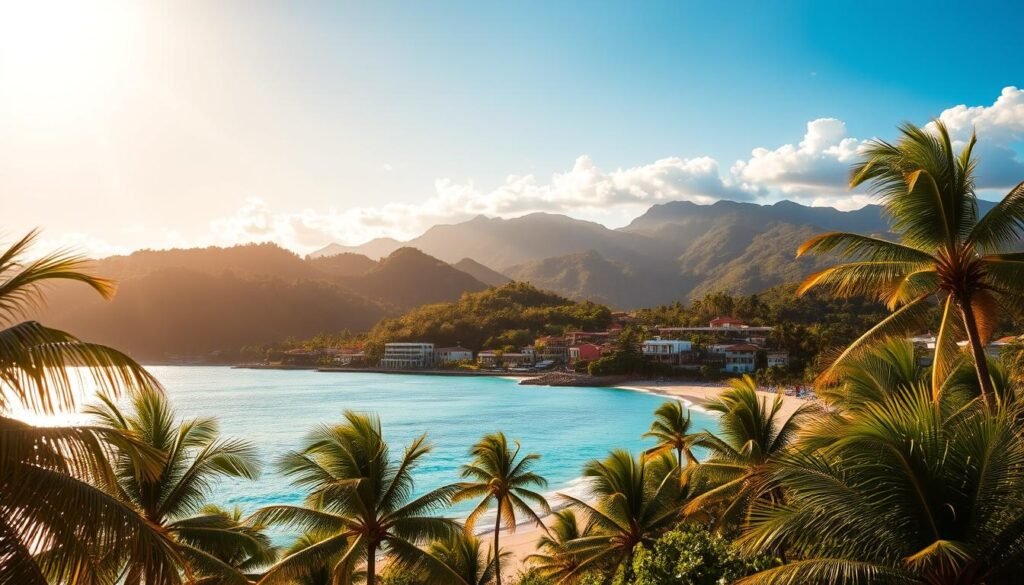
Choose dates that fit how you like to travel—whether you hunt deals, dodge crowds, or chase events. I map each style to clear windows so you can pick dates with confidence.
Value seekers: May, early November, and September (with flexibility)
If I want savings, I aim for May, early November, or September. These months sit mostly in the low season and often deliver lower prices.
September is usually cheapest, but it falls inside hurricane season. So I buy flexible fares and consider cancel-for-any-reason protection.
Crowd avoiders: late spring and early fall windows
When I want quieter beaches and easier dining, I target late spring or early fall. The shoulder windows around may june give warm days with fewer crowds.You can learn more about best-places-to-visit-in-january
I also start popular attractions early in the morning. That small change keeps me ahead of most visitors.
“I track fares, lock top restaurants for winter dates, and leave room in my plan when traveling in low season.”
| Travel style | When I go | Why it works |
|---|---|---|
| Value-focused | May; early Nov; Sept | Lowest prices, off-season deals; need flexibility |
| Crowd avoider | Late spring; early fall | Fewer crowds, warm weather, easier reservations |
| Balanced trip | Mix high season days with shoulder dates | Good weather, lower prices, better availability |
Trip planning essentials for a smooth visit
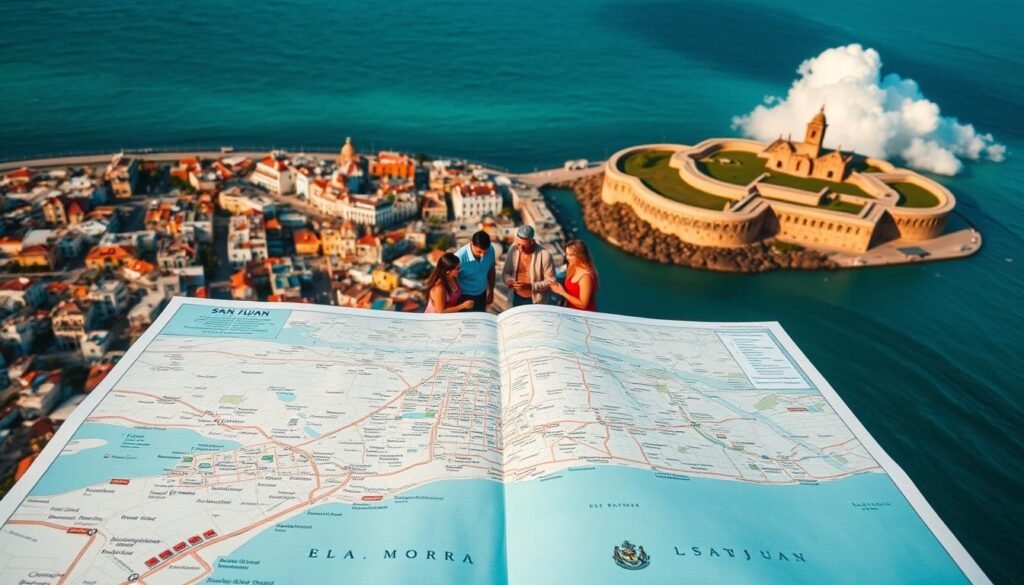
I set a straightforward framework that helps you decide how many days to stay and what to lock in early.
How many days I recommend:
How many days I recommend: 4–7 days for first-timers
For a first trip, I aim for 4–7 days so I can savor Old San Juan, a beach day or two, and a rainforest or bay tour without rushing.
I like to leave a free afternoon for wandering and one night open for a surprise activity. This pace keeps the vacation relaxed and rewarding.
Smart booking moves: flights, rentals, and insurance
I start by checking flights into SJU for the widest schedule. I also compare BQN if I plan west-coast stops or PSE for southern bases.
From New York, midweek departures and shoulder months often give lower fares. New JetBlue routes make direct options even easier.
- I rent a car when I want to explore beyond metro San Juan; otherwise, Uber works well for short hops and restaurants.
- During hurricane months I favor flexible fares and consider cancel-for-any-reason insurance so a late change won’t cost me the trip.
- I book headline tours and top restaurants early in high-demand months, but in May–June I stay more flexible and spontaneous.
| Need | My move | Why it matters |
|---|---|---|
| Flight options | Check SJU first; compare BQN/PSE | More routes from New York; better regional access |
| Car vs rideshare | Rent for island roaming; Uber in San Juan | Freedom for beaches and rainforests; easy city trips |
| Insurance | Buy CFAR during hurricane months | Protects plans in August–September risk window |
Conclusion
Conclusion
Use this final guide as a decision tool. My quick take: winter (Dec–Apr) gives the driest weather and festival energy in San Juan, while May–June balances lower prices and fewer crowds.
For deep discounts, I look at July–November but plan for hurricane season risk in Aug–Sep with flexible bookings or insurance.
If festivals and culture matter, I anchor trips around San Sebastián in January and stroll the old san juan streets. For glow-in-the-dark nights, I check the moon for the clearest bioluminescent bay paddles.
Direct flights from New York make it easy for many travelers to match dates with mood, weather, and prices. Pick the window that fits your goals, book smart, and enjoy the island.


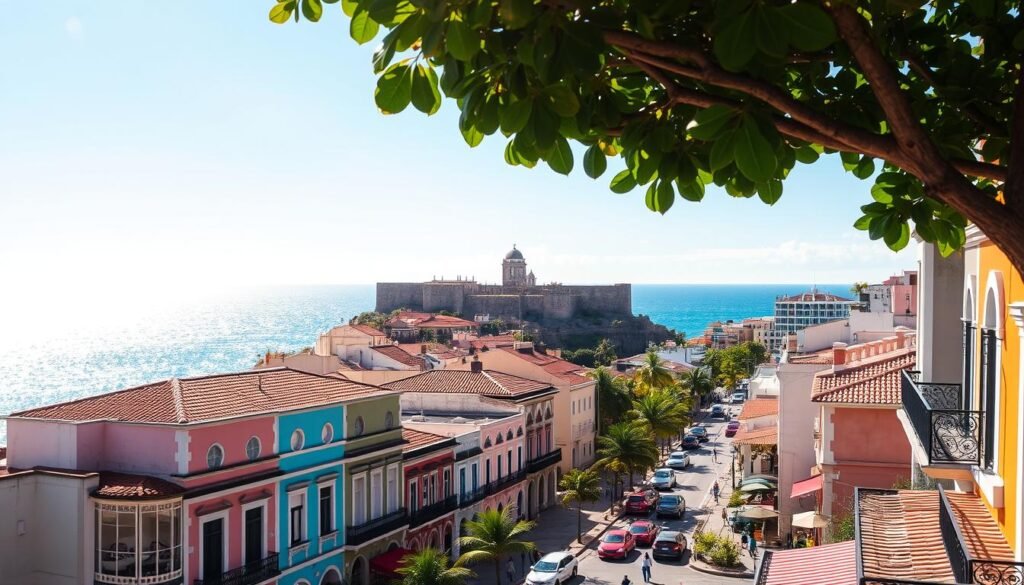



















One Response